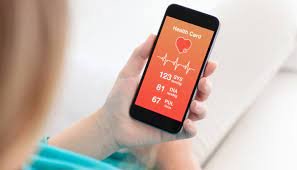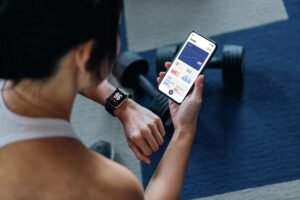
Your Comprehensive Guide on Biohacking for Weight Loss

Weight control is a constant issue for many people in today’s society, and it may be a difficult path. Personal aesthetics, general well-being, and the rising incidence of obesity-related health issues are just a few of the factors that drive people’s desire to lose weight. Biohacking has emerged as a transformational strategy to attain long-term weight loss in response to this growing worry. It optimizes results by leveraging technology and data, making it a potent tool in the pursuit of a better life.
Table of Contents
Introduction
This article looks into the interesting area of biohacking for weight loss, examining the fundamental principles, methodology, and technology underlying this novel approach. By the conclusion, you will have a thorough grasp of how biohacking can help you achieve long-term weight loss success through personalized data-driven techniques. Keep reading till the end to learn the most effective tips to biohack your body and optimize your weight loss results.
What is Biohacking?
Biohacking is a word that has gained popularity in recent years. It is the practice of maximizing one’s biology using various tools and techniques. Natural, nutritional, technological, or a mix of all of these tools and strategies can be used. The basic purpose of biohacking is to improve physical and mental health, increase longevity, and improve human performance.
When it comes to weight loss, biohacking focuses on using technology and data to better understand one’s biology and develop personalized tactics for losing excess pounds. The basic idea is that by monitoring and changing many parts of your life, you can get better results than traditional, one-size-fits-all techniques.
Data-Driven Methodologies
Data-driven biohacking is an essential component of successful weight loss. This is how it works:
In the world of biohacking, data-driven tactics are the foundation for achieving successful weight loss results. The combination of cutting-edge technology, thorough data collection, and targeted interventions provides a potent synergy that improves outcomes. Here’s a detailed look at how data-driven biohacking works:

Biometric Monitoring: Biohackers are modern-day explorers, armed with a plethora of instruments that allow them to delve deep into the mysteries of their bodies. Wearables, smartphone apps, and other monitoring technologies accompany them on this journey. These devices allow for the collection of a wide range of biometric data, such as heart rate, sleep patterns, physical activity, and dietary intake. This entails measuring variables such as daily calorie intake, macronutrient ratios, and activity levels for weight loss enthusiasts.
The importance of biometric monitoring stems from its ability to quantify previously obscure features. It enables biohackers to communicate with their bodies in real time, allowing them to understand how their everyday choices affect their weight and overall health. They acquire crucial insights that go beyond ordinary weight swings by regularly measuring these indicators.

Progress Tracking: Losing weight is a dynamic journey, and biohackers realize that it should be properly documented. They keep meticulous records of their weight loss efforts, similar to a captain’s log of their trip to better health. These records contain a wide range of information, from daily meal diaries to workout summaries and even emotional state tracking.
Progress tracking acts as a compass, guiding biohackers through the turbulent waters of weight loss. It enables people to examine their activities and behaviors over time, exposing patterns and trends that might otherwise go unnoticed. Biohackers can make informed decisions about the next stages in their weight loss quest when confronted with objective evidence from their records. This could entail raising the intensity of your workouts, altering your macronutrient ratios, or simply sticking to a more constant sleep pattern.
Data Analysis: The crux of data-driven biohacking is the analysis of the information gathered. Biohackers put on the hat of data scientists as they sift through numbers and graphs in quest of key insights that could help them solve their weight loss problems. Advanced data analysis goes beyond simple observation to uncover patterns, triggers, and connections that influence weight reduction.
This phase of analysis can reveal underlying causes of weight gain, such as hormone imbalances or dietary sensitivities. Biohackers can adapt their treatments more effectively if they understand how these components interact and affect the body’s homeostasis. For example, seeing a link between increased stress and poor eating habits may motivate a biohacker to incorporate stress-reduction tactics into their daily routine.

Personalized Interventions: Biohackers are well-prepared to begin on the final leg of their trip with personalized interventions now that they have a better grasp of their bodies’ responses. This is where biohacking’s art and science meet. These treatments are built on the insights gained from data analysis.
Personalized interventions cover a wide range of actions, from changing meal patterns and modifying exercise routines to experimenting with supplements or nootropics to boost metabolism and energy levels. The key principle in this case is customization. What works for one biohacker may not work for another, and this personalized approach ensures that therapies are properly matched to a person’s exact requirements and responses.
Biohacking Nutrition and Diet
Diet is one of the important keys to biohacking for weight loss. It’s not only about limiting calories or sticking to cookie-cutter diets; it’s about developing a personalized and optimized nutrition approach. Here are some tips to biohack your body through balanced diet plans:

Ketogenic Diet: The ketogenic diet, sometimes known as the keto diet, has grown in favor in the world of biohacking. It’s a low-carb, high-fat diet that causes the body to enter ketosis, a state in which it primarily burns fat for energy. This nutritional plan takes advantage of the metabolic shift from carbohydrates to fats, and biohackers frequently experiment with the keto diet to boost fat reduction and energy levels.
When carbohydrate consumption is reduced but fat consumption is increased, the body’s primary source of energy shifts from glucose to ketones, which are obtained from fat breakdown. This transition can result in increased fat burning and satiety. Ketone meters, for example, can help biohackers monitor their ketone levels and fine-tune their diet for the best outcomes.

Intermittent fasting: Intermittent fasting is another effective dietary strategy that biohackers employ. This method comprises alternate intervals of eating and fasting. While there are many different intermittent fasting patterns, the most prevalent are the 16/8 (fast for 16 hours, eat within an 8-hour window) and the 5:2 (have a lower-calorie diet on two non-consecutive days each week).
Intermittent fasting has been found to improve weight loss by lowering total calorie intake and increasing metabolic flexibility. This method not only aids biohackers in losing weight, but it also encourages improved blood sugar control and insulin sensitivity. Fasting can cause the body to use fat stores for energy, resulting in fat loss.

Tracking Macros: Biohackers are all about precision, and when it comes to nutrition, they painstakingly measure macronutrients—carbohydrates, fats, and proteins. This data-driven strategy enables exact calorie intake and nutritional balance regulation. Biohackers strive to achieve particular macronutrient ratios that are suited to their specific goals and metabolic responses.
Tracking macros is often done via smartphone apps or specialized software, allowing biohackers to keep track of their daily nutritional consumption. This approach gives individuals a clear image of whether their diet is in line with their weight loss goals and allows them to make real-time adjustments as needed.

Dietary Sensitivity Testing: Weight loss resistance in some biohackers may be connected to underlying dietary sensitivity or allergies. In such circumstances, food sensitivity testing can be a useful technique. This testing assists in identifying certain meals that may be impeding their weight loss success.
Biohackers can optimize their eating plan for greater results by eliminating certain trigger foods from their diet. This method not only helps weight loss but also relieves symptoms connected with dietary allergies, such as digestive discomfort and inflammation. To identify problematic foods, food sensitivity testing may include blood tests or exclusion diets.
Biohacking Exercise and Fitness
While diet is important in biohacking for weight loss, exercise is equally crucial for it. It can easily be considered one of the keys to biohacking for weight loss. Biohackers recognize that working out smarter is more important than working out more. Here are some tips to biohack your body through your workout routines:

High-Intensity Interval Training (HIIT): High-Intensity Interval Training, or HIIT, is a popular method among biohackers due to its amazing success in burning calories and increasing metabolic rate. Short bursts of intensive exercise, such as sprinting or jumping jacks, are interspersed with brief intervals of rest or low-intensity activity in HIIT. This cyclic program may be finished quickly, making it a good choice for individuals with hectic schedules.
The allure of high-intensity interval training (HIIT) is its afterburn effect, also known as excess post-exercise oxygen consumption (EPOC). Following an HIIT session, the body continues to burn calories at a high rate even when at rest, resulting in increased calorie expenditure throughout the day. This calorie-burning extravaganza aids in weight loss dramatically.

Strength Training: Muscle building through strength training is a key component of a biohacker’s weight loss strategy. Muscle tissue burns more calories at rest than fat tissue because it is metabolically active. Biohackers construct a more efficient calorie-burning engine within their bodies by boosting muscle mass.
Weightlifting, bodyweight workouts, and resistance bands are all examples of strength training exercises. Biohackers frequently modify strength training routines to focus on particular muscle groups and achieve a symmetrical and balanced body. The interaction of muscle growth and fat reduction leads to a more contoured and lean appearance.

Biofeedback Equipment: Precision is important to biohackers, and they frequently use biofeedback equipment to maximize their exercises. Heart rate monitors and electromyography (EMG) sensors, for example, provide real-time data on performance and physical responses. Biohackers can make informed decisions about their fitness routine using this data.
Biohackers, for example, can use heart rate monitors to keep inside certain heart rate zones appropriate to their fitness goals, such as fat burning or cardiovascular endurance. EMG sensors offer information about muscle activation and can assist biohackers in ensuring that target muscles are engaged during activities.

Sleep Optimization: Getting enough sleep is one of the essential keys to biohacking for weight loss. Biohackers understand that sleep quality and amount have a direct impact on exercise performance and general health. To that aim, they frequently employ sleep tracking devices to analyze sleep patterns and modify their routines to allow for more restorative sleep.
Sleep optimization includes characteristics such as sleep duration, sleep latency (the time it takes to fall asleep), sleep efficiency (the percentage of time spent asleep while in bed), and the frequency and duration of sleep disruptions. With this knowledge, biohackers can make changes to their sleeping environment, bedtime routine, and sleep schedule to guarantee they get the most out of their sleep.
Biohacking for Emotional and Mental Health
The dynamic arena of biohacking for weight loss extends beyond diet and exercise to the intricate geography of the human mind and emotions. Emotional well-being is widely acknowledged as an important factor in obtaining and maintaining a healthy weight. Long-term weight loss success remains elusive without addressing psychological factors, according to biohackers. Here are some tips to biohack your body through mental and emotional well-being:

Meditation and Mindfulness: Meditation and mindfulness techniques are cornerstones of emotional well-being biohacking. These approaches are used by biohackers to reduce stress, improve, and build a happy mindset. They want to reduce the overproduction of cortisol, a stress hormone linked to weight gain, by encouraging mindfulness.
Meditation and mindfulness are mental workouts that help people center themselves, maintain emotional equilibrium, and build resistance to stressors. Biohackers learn to negotiate the ups and downs of their weight loss journey with grace and composure by using these tactics on a daily basis.

Neurofeedback: Some biohackers believe that enhancing brain function is the key to better decision-making and impulse control. One way they are experimenting is through neurofeedback. This ground-breaking method involves teaching the brain to perform properly by providing real-time feedback on brain activity.
Neurofeedback is a personalized trip into the inner workings of the brain. It assists biohackers in identifying brain areas associated with cravings, emotional eating, or impulsive conduct. Biohackers can gain greater control over their responses to food and stress by learning to alter these brain processes, thereby aiding their weight loss attempts.

Behavioral Tracking: Understanding and changing habits is an important part of emotional well-being biohacking. To analyze their daily routines, habits, and triggers for unhealthy behaviors, biohackers frequently use behavioral tracking applications and software. This information becomes a helpful resource for building strategies for breaking harmful behaviors and forming new ones.
Behavioral tracking is similar to having a personal investigator look into your habits. It enables biohackers to detect the cues that initiate undesirable behaviors as well as the rewards that reinforce them. With this information, they can implement interventions to refocus their behaviors toward those that support their weight loss goals.

Professional Guidance: Recognizing that emotional and psychological concerns play a significant role in weight gain, many biohackers seek professional help. Therapists, nutritionists, and coaches who specialize in emotional well-being may be consulted. Consult them and seek personalized and effective tips to biohack your body. This holistic approach recognizes that mental and emotional wellness are just as important as physical health when it comes to losing weight.
Through counseling and therapy procedures, therapists can assist patients in addressing underlying emotional issues such as stress or emotional eating triggers. Nutritionists can advise on dietary choices that can help with mood and emotional well-being. Coaches provide inspiration and accountability to clients in order to help them remain on track and negotiate the emotional issues that come with losing weight.
Wearable Technology and Devices
The digital age has brought about a major change in the realm of biohacking, with wearable devices and smartphone apps emerging as important tools for optimizing one’s weight loss journey. Individuals may now collect, analyze, and apply data with unprecedented precision thanks to the convergence of technology and biohacking. Here’s how these technological advancements are changing the landscape of weight loss biohacking:

Smart Scales: What began as a simple bathroom scale has evolved into a sophisticated piece of technology. Modern smart scales not only weigh you but also provide information about your body composition. These scales are capable of determining body fat percentage, muscular mass, and even bone density. This data is like gold to biohackers since it allows them to track their success and fine-tune their weight loss tactics.
Biohackers obtain a more sophisticated understanding of how their bodies respond to weight loss efforts by tracking not only weight but also changes in body composition. This information can help guide dietary changes, exercise routines, and even evaluate the effectiveness of supplements or therapies.

Activity Trackers: Wearable fitness devices such as smartwatches and fitness bands have become commonplace among biohackers. These gadgets measure daily physical activity in real time, tracking parameters such as steps taken, distance traveled, and calories burned. They play an important role in assisting biohackers to stay active and achieve their objectives.
Activity monitors serve as continual reminders and motivators, urging biohackers to stay active. Biohackers can use the data obtained to track their progress, spot trends in their activity levels, and change their routines to maximize calorie expenditure and optimize their weight reduction.

Diet and Nutrition Apps: In the age of smartphones, there’s an app for almost anything, and biohackers have taken advantage of this technology to optimize their diets. Tracking food intake, measuring caloric expenditure, and calculating macronutrient ratios are all tools available through applications and online platforms. Some sophisticated apps even provide personalized meal plans and recipes based on a user’s data.
Biohackers can rigorously document their daily dietary intake using diet and nutrition apps. These apps offer information about macronutrient balance, calorie counts, and nutritional composition, allowing for more precise diet planning. Biohackers can experiment with various dietary approaches, assess their impacts, and alter their plans in real-time to ensure that their nutrition is consistent with their weight loss goals.
Note: There might be affiliate links mentioned here. We may receive a commission if you purchase a product through an affiliate link. There is no additional charge for you. Please do your own research before making any online purchases.
Sleep Monitors: Sleep is an important component of successful weight loss, and biohackers understand the importance of getting enough rest. Sleep tracking technologies assess sleep patterns and provide insights about the quality and length of rest, frequently in the form of wearable bands or mattress-based sensors.
These gadgets can assist biohackers in identifying sleep abnormalities, such as restless sleep or frequent awakenings, that may be interfering with the restorative quality of their sleep. Biohackers can use this knowledge to make changes to their sleep environment, bedtime routine, and even nutritional choices to improve the quality and duration of their sleep, thereby supporting their weight loss goals.

Hormone and Metabolic Testing: Comprehensive testing is a great tool for expert biohackers to check hormone levels and metabolic health. Advanced diagnostic examinations might reveal hidden disorders that are impeding weight loss. Hormone imbalances, such as thyroid dysfunction or insulin resistance, can, for example, have a substantial impact on weight reduction.
Biohackers can uncover potential hurdles to their weight loss efforts by undertaking hormonal and metabolic testing. With this information, they can create highly personalized interventions, such as focused food changes, fitness routines, or even particular medicines to address the underlying disorders.
Supplements and Nootropics
Nootropics, often known as smart pharmaceuticals or cognitive enhancers, have emerged as one of the keys to biohacking for weight loss. While the use of nootropics is debatable, they provide a unique perspective within the larger picture of biohacking because they can help with both cognitive function and weight loss. Here’s a closer look at some of the important nootropics and supplements used by biohackers:

Caffeine: Caffeine, one of the most widely ingested nootropics, is a key component in the toolkits of many biohackers. It is well-known for its ability to boost energy, promote alertness, and improve concentration. Caffeine is frequently consumed before exercise to improve exercise performance and increase calorie-burning ability. Caffeine can provide the essential push to power through strenuous workout regimens by activating the central nervous system, assisting in both the fat-burning process and general physical performance.

Green Tea Extract: Another natural nootropic popular among biohackers for its possible weight loss advantages is green tea extract. Green tea includes catechins, which are thought to increase metabolism and aid in fat burning. These catechins operate by increasing thermogenesis, which is the process by which the body generates heat and burns calories. Green tea extract pills provide a concentrated amount of these substances, making it easy for biohackers to include green tea’s potential advantages into their weight loss program.

Adaptogens: Adaptogens are a type of herb or substance that has garnered popularity in the biohacking community due to their stress-relieving qualities. While adaptogens are not directly involved in fat burning, they may help with weight loss indirectly by lowering cortisol levels. When cortisol, also known as the “stress hormone,” is continuously increased, it can cause weight gain, particularly in the abdomen area. Adaptogens can help the body adapt to stress more efficiently, reducing the influence of cortisol on weight management.

Nootropic Stacks: Some biohackers take nootropics a step further by experimenting with different combinations of cognitive-enhancing substances known as “stacks.” These stacks are highly customized, consisting of a tailored selection of nootropics that cater to specific cognitive and energy needs. Nootropic stacks have the potential to improve mental performance, but they should be used with caution. When going into these sophisticated tactics, biohackers must perform significant studies, carefully evaluate their responses, and confer with professionals.
Ethics and Safety in Biohacking
Biohacking is an exciting area with promises of cognitive enhancement, weight loss optimization, and improved overall health. It is important to remember, however, that with huge potential benefits come considerable ethical considerations and safety measures. Here’s a closer look at these critical elements:

Ethical Considerations: Nootropics and other drugs are frequently used in biohacking to improve cognitive function or aid in weight loss. While striving for self-improvement is desirable, it creates ethical concerns. For example, the use of cognitive enhancers in competitive situations may create an uneven playing field, raising questions about fairness. It is critical to approach these practices with a clear understanding of the potential hazards and advantages, as well as to hold open talks about the ethical implications.

Safety First: A cardinal rule in the biohacker’s handbook should be to prioritize safety. Experimenting with different biohacking methods, such as cognitive enhancers, dietary regimens, or advanced technologies, should be done with caution. It is critical to obtain professional advice and understand the potential side effects and health risks linked to these procedures. Regular monitoring, data-driven decision-making, and a dedication to minimizing harm are also required for safety.

Personalization: Biohacking is innately personal. Personalization is one of the keys to biohacking for weight loss in an effective way. What works for one person might not work for the next. A fundamental principle of biohacking is the emphasis on personalization. Biohackers understand that each person’s biology, genetics, and lifestyle are unique, and their techniques should reflect this. It is vital to tailor interventions to an individual’s personal facts and responses in order to achieve the intended effects while limiting potential hazards.

Regulation: As biohacking becomes more popular, regulatory organizations must keep up with the changing scenario. Regulations that safeguard the safety and efficacy of biohacking products and services are urgently needed. To safeguard consumers from unscrupulous tactics and dangerous interventions, clear norms and standards should be created. Regulatory control will aid in the preservation of transparency and accountability in the biohacking business.
FAQs
What is biohacking, and how does it relate to losing weight?
Biohacking is the activity of enhancing one’s biology using a variety of tools and approaches, such as technology and data. As it comes to weight loss, biohacking uses these tactics to develop customized strategies for losing excess pounds, concentrating on better knowing one’s biology and attaining superior results as compared to traditional ways.
How does data-driven biohacking help people lose weight?
Data-driven biohacking involves using wearable tech and apps to collect biometric data, keeping track of progress, analyzing the data, and using what you learn to create personalized plans for losing weight. It enables people to make smart food, exercise, and lifestyle decisions based on real-time data.
What are some of the most important tactics that biohackers employ to optimize their nutrition for weight loss?
To optimize their nutrition, biohackers use tactics such as the ketogenic diet, intermittent fasting, macro tracking, and food sensitivity testing. These approaches enable personalized and data-driven dietary programs that are suited to a person’s specific needs and goals.
What role does exercise play in biohacking for weight loss?
Exercise is essential for weight loss biohacking. To enhance the effectiveness of their exercises, speed calorie burning, and build lean muscle mass, biohackers frequently use high-intensity interval training (HIIT), strength training, biofeedback devices, and sleep optimization.
What techniques do biohackers employ to improve their mental well-being while dieting?
Biohackers prioritize their emotional well-being by meditating and practicing mindfulness, experimenting with neurofeedback, tracking habits with behavioral tracking apps, and seeking professional help from therapists, nutritionists, and coaches to address underlying emotional and psychological issues.
How has technology influenced weight loss biohacking?
Wearable technologies and smartphone apps, for example, have made it easier to collect and evaluate data for biohacking. Smart scales, activity trackers, diet and nutrition apps, sleep monitors, and hormone testing are examples of tools that might help you optimize your weight loss strategy.
What are nootropics, and how do they relate to biohacking for weight loss?
Nootropics, often known as smart medications or cognitive enhancers, are chemicals that improve cognitive function while also potentially aiding in weight loss. Some biohackers use caffeine, green tea extract, adaptogens, and customized nootropic stacks to boost energy, focus, and possibly metabolism.
What ethical considerations should be kept in mind when engaging in weight-loss biohacking?
Fairness in competitive circumstances, honesty regarding the use of cognitive enhancers, and the appropriate use of supplements are all ethical considerations. It is encouraged to have open discussions regarding the potential ethical consequences of biohacking methods.
How can biohackers ensure their weight loss journey is safe?
Safety should always come first. Biohackers should proceed with caution, seek professional advice, and be fully aware of the potential negative effects and health hazards. Regular monitoring and data-driven decision-making are required to reduce harm.
Is there a one-size-fits-all method to weight loss with biohacking?
Biohacking stresses personalization. What works for one person may not work for another, and the technique should be adapted to the specific data and answers of each individual. Personalization is essential for attaining the best weight reduction results.
Conclusion
Biohacking for weight loss is a fascinating technique that optimizes results by leveraging technology and data. It signifies a transition away from one-size-fits-all techniques and toward personalized, data-driven approaches that take into account an individual’s unique biology and demands. Biohackers hope to achieve long-term weight loss results by combining biometric monitoring, nutrition and diet optimization, exercise and fitness tactics, mental and emotional well-being, technology and wearable devices, and, in some cases, nootropics and supplements.
While biohacking appears to be a promising road to improved health and well-being, it is critical to proceed with caution and knowledge of the ethical and safety concerns involved. Consultation with healthcare professionals and subject matter experts can help guarantee that biohacking is done responsibly and safely.
Disclaimer: The information provided in this article is for educational purposes only and should not be considered as a substitute for medical advice. Consult a healthcare professional before implementing any home remedies or making significant changes to your lifestyle.






